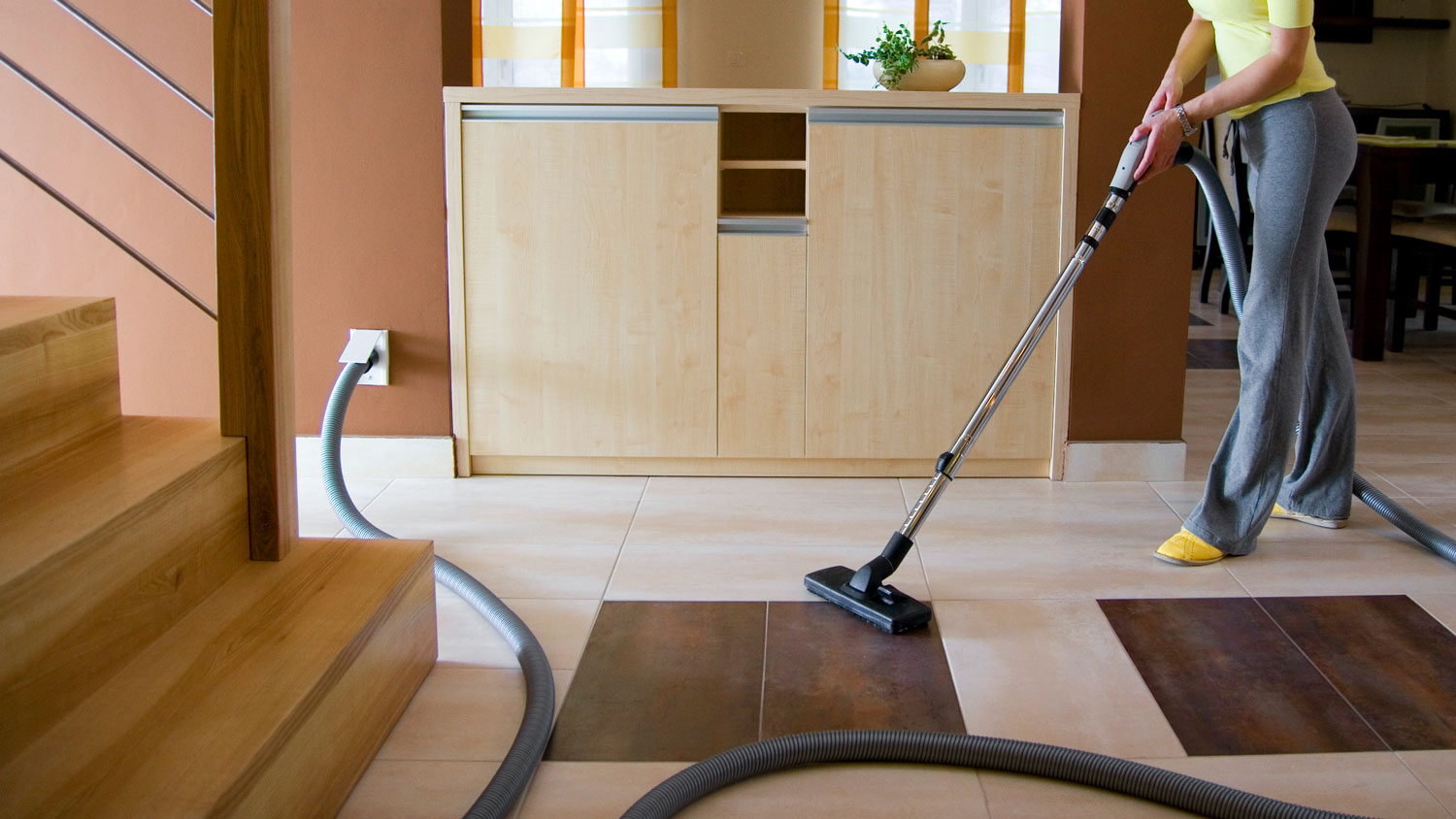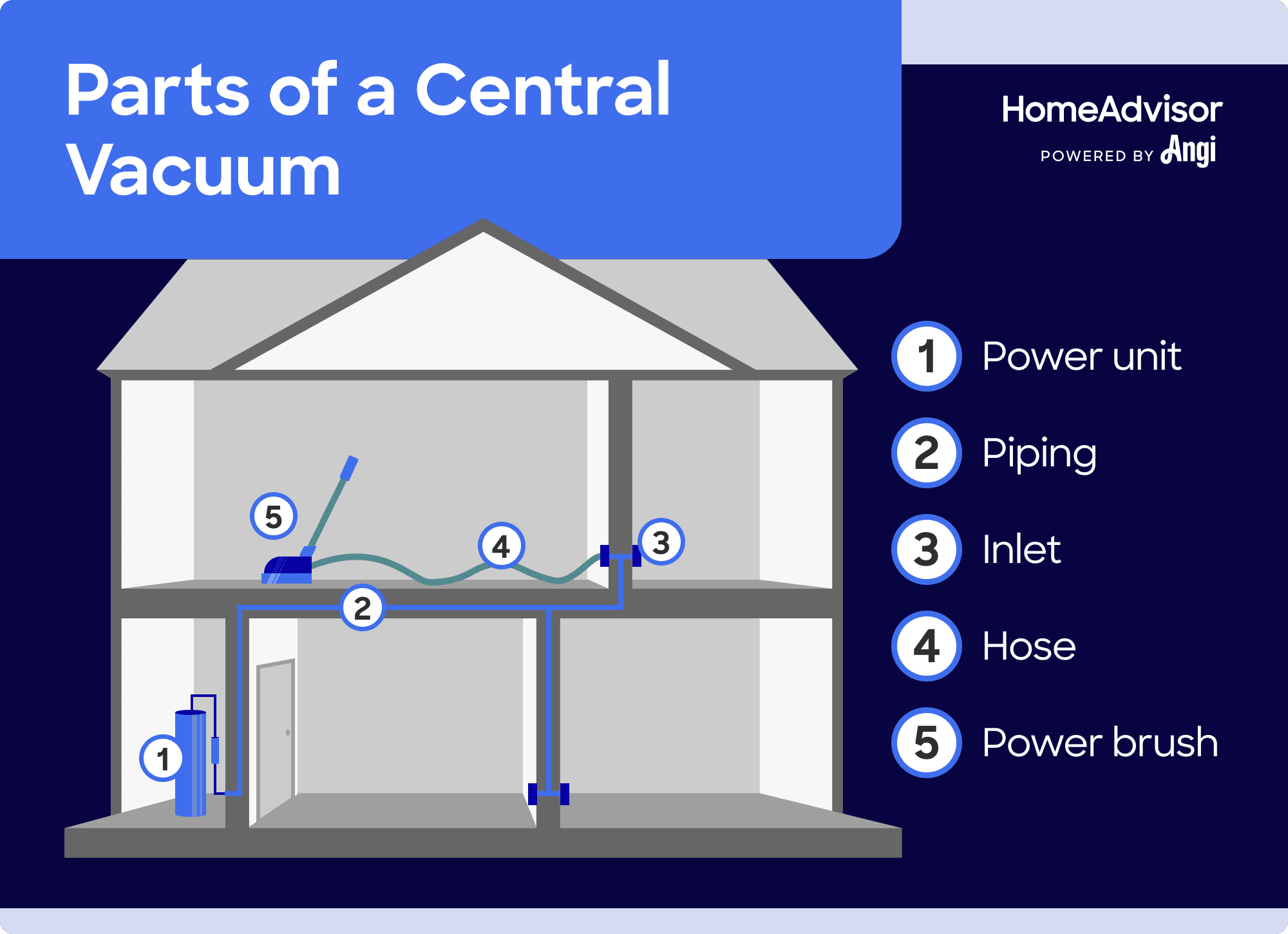
Who installs central vacuum systems? Learn who to call—specialized vacuum installers or qualified HVAC pros—and what to ask before you hire.
A central vacuum system costs an average of $1,583


Central vacuum installation costs an average of $1,094 to $2,194, or $1,583.
Central vacuum cost factors include system type, home size, accessories, and labor.
Long-term benefits include powerful suction, improved air quality, and added home appeal.
Budgeting helps eliminate unexpected costs, and hiring a professional for central vacuum installation ensures a proper installation.
This article was updated using automation technology and thoroughly reviewed for accuracy by HomeAdvisor Editor Ryan Noonan.
Central vacuum costs average $1,583, with most homeowners spending between $1,094 and $2,194. In some cases, you could pay as little as $240 or up to $3,000. Key factors include system type, home size, and the number of outlets. Because these systems are often in frequent use, thorough budgeting and hiring a central vacuum professional are crucial for a smooth installation.

There are several cost factors to consider when it comes to a central vacuum system, in particular, the system type, your home size, the number of outlets needed, labor, and any accessories you choose to add. Here’s a closer look at how your central vacuum costs break down.
There are two main types of central vacuum. One type is a cyclonic power unit, which costs $500 to $5,000. The other is a filtered power unit, costing $100 to $3,500. Installation for either system type will cost between $400 and $1,500 more.
Prices differ for central vacuum systems because the parts and the number of parts in a system vary based on the homeowner's requirements and property size.
| Part | Average Cost (Parts Only) |
|---|---|
| Vacuum attachments | $10–$700 each |
| Standard hose | $200 |
| Retractable hose | $175–$1,000 |
Vacuum attachments cost $10 to $100 each. You can obtain attachments for various floor types, including tile, hardwood, and carpet. Many attachments suit different needs, including upholstery attachments, crevice tools, and pet brushes.
A standard 30- to 35-foot hose for a central vacuum cleaner costs $50 to $250, depending on the brand and length. The longer the hose, the greater the cost. You can also choose a standard detachable hose or a retractable one.
Retractable hoses are stored inside the outlets; simply open the outlet, pull out the hose, and start vacuuming. The hose retracts back inside the outlet when you finish. Retractable hoses tend to cost more because of their increased convenience, but they're also more expensive and more complex to replace if damaged.
Detachable hoses fall on the lower end of the price range. They lack the convenience of retractable ones, as you have to move them from room to room, but they're more affordable and straightforward to replace.
The size of your home is a significant factor in determining the cost of installing a central vacuum system. The larger the home, the more vacuum outlets you’ll need to install around the house. For a 2,000-square-foot home, for instance, you can expect to pay $2,500 for your vacuum installation. Larger homes will also require a larger power unit, and the installation process will take longer. All of this will increase your total costs.
For large homes or rooms with unique layouts, you’ll need to strategically place outlets to ensure you can reach every inch of the floor when you’re cleaning. This means that home vacuum systems with more outlets will always be more expensive. Your home will likely need a bare minimum of one outlet per room for your central vacuum system to be useful. Extra outlets cost $130 to $300 each.
For houses under 2,000 square feet, labor costs an average of $500 to $700; for larger homes, labor costs exceed $1,000.
In addition to the basic components of your central vacuum system, you may consider adding some extra accessories to ensure the system meets your specific needs. Depending on the accessories you choose, these can significantly increase costs.
| Accessory | Average Cost |
|---|---|
| Dusting brush | $10–$50 |
| Pet brush | $10–$135 |
| Automatic dustpan | $205–$500 |
| Hose cabinet | $100 |
Specific attachments for pet hair cost between $10 and $135. They allow you to pick up pet hair and dander more efficiently. Additionally, if you have pets that shed, you can purchase grooming attachments that allow you to safely and gently groom your pet. Also available are lint brushes, combs, and brush heads.
An automatic dustpan is installed at the base of a cabinet or wall and connects to the central vacuum. After you sweep debris toward the inlet and tap the switch, the system pulls the dirt away—no handheld dustpan required.
Expect to pay $100 to install a hose cabinet. If you want to keep your hose and attachments close to hand but out of sight, a hose cabinet is a practical way to stay organized. You can choose a cabinet that is roomy enough to house all your vacuum attachments, hoses, and other cleaning equipment.
A central vacuum system is often a desirable feature for prospective homebuyers. The convenience of a central vacuum system can make your home more attractive since people know they won’t have to trouble themselves with a standard vacuum or need to install a central system themselves.
A newly installed system also indicates that potential buyers won’t have to worry about central vacuum system repair costs. However, because the overall cost of a central vacuum system is fairly low, don’t expect it to add to your home’s value too significantly.
Central vacuum systems are quite affordable, but there are a few ways you can save even more. These cost-saving tips include:
Limit add-ons and accessories to only what’s necessary for your home—you may be able to save costs by limiting extras.
Look out for (surprisingly common) sales and promotions on central vacuum systems.
Consider doing some work yourself, such as finishing the walls after outlets are installed, to save on labor costs.
Work with your central vacuum installation professional to plan the outlet placement strategically, using the minimum amount possible.
If you have a closet that doesn’t get much use, consider using it as storage for your vacuum hose and accessories instead of buying a purpose-built cabinet.
No place is more important than your home, which is why HomeAdvisor connects homeowners with local pros to transform their houses into homes they love. To help homeowners prepare for their next project, HomeAdvisor provides readers with accurate cost data and follows strict editorial guidelines. After a project is complete, we survey real customers about the costs to develop the pricing data you see, so you can make the best decisions for you and your home. We pair this data with research from reputable sources, including the U.S. Bureau of Labor Statistics, academic journals, market studies, and interviews with industry experts—all to ensure our prices reflect real-world projects.